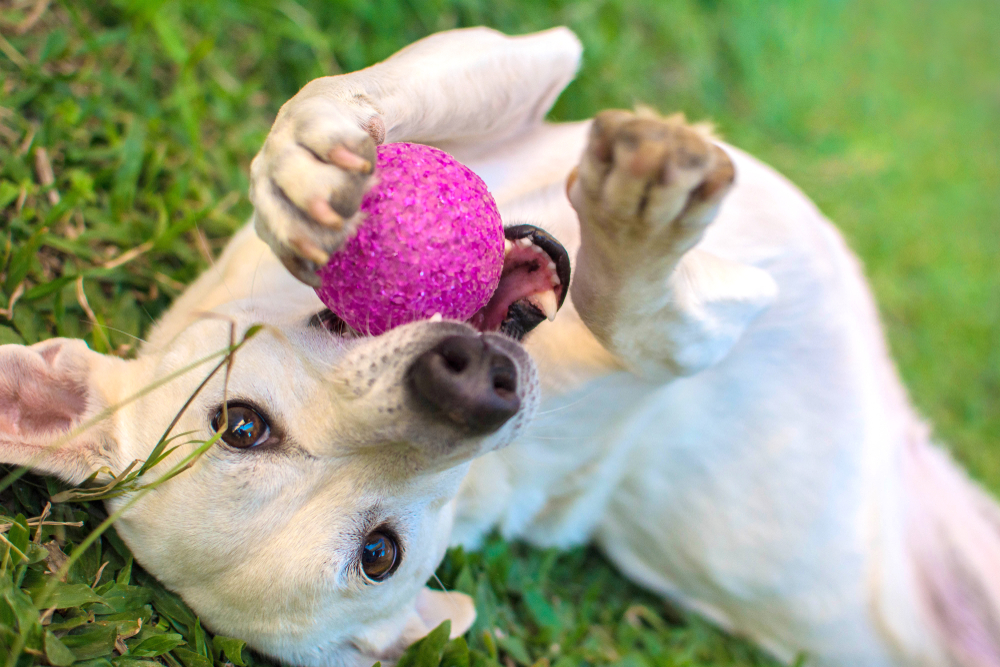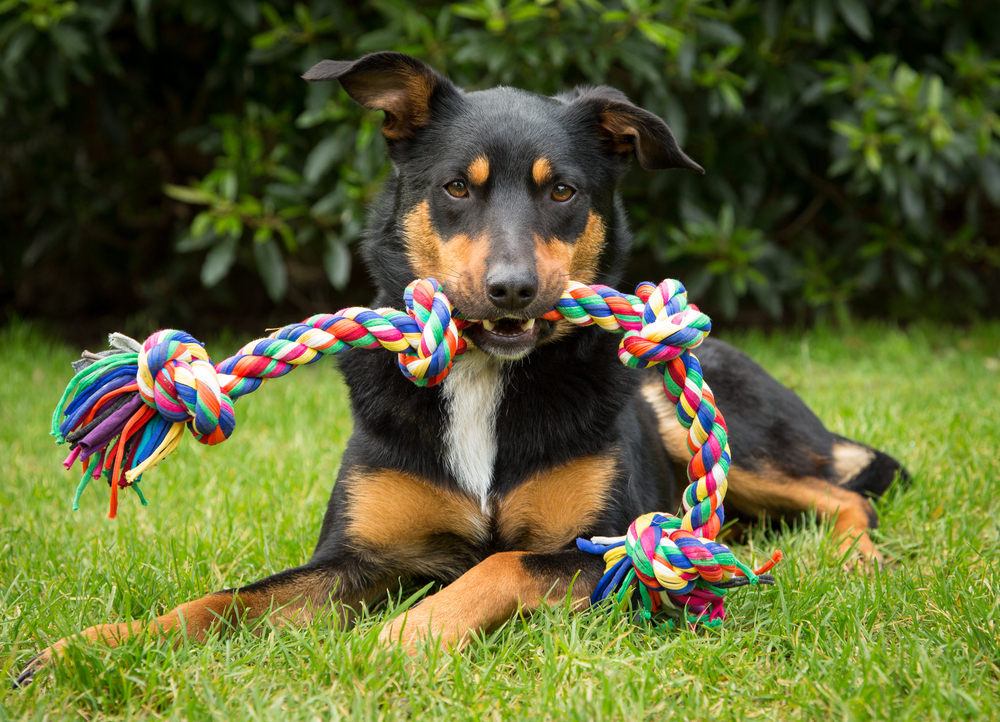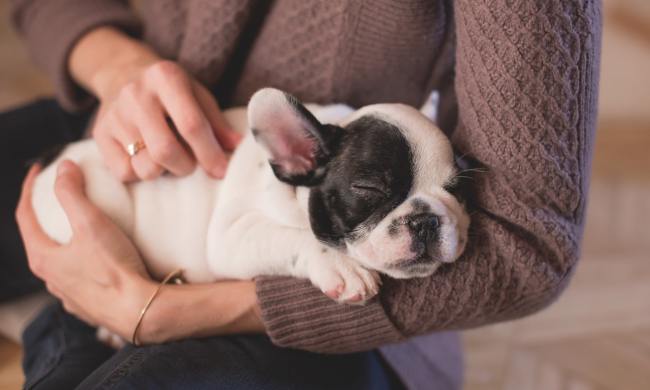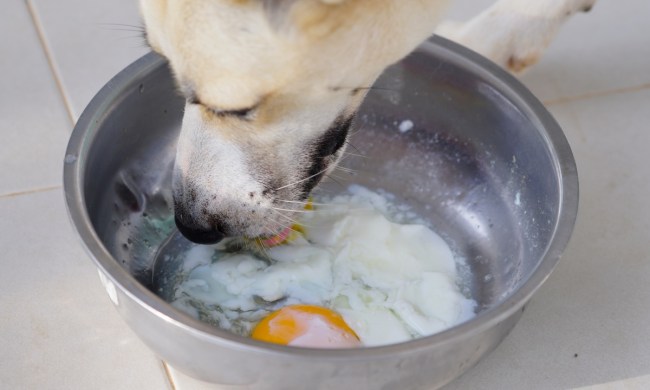The temptation is real. Any dog owner worthy of his canine companion will tell you it’s hard to resist buying a new toy or two whenever you’re at the pet store … or the drugstore … or the grocery store … or surfing online. The opportunities are limitless and, well, everywhere! We love our pets. And bringing home a new toy for them to play with “on occasion” is one of the ways we enjoy spoiling them.
And rightly so. Playing with toys is an important part of your dog’s overall health. The right toy can help your dog fight boredom, relieve his anxiety, and provide an incentive for him to engage in physical activity. But buying toys only to have your dog ruin them in a day can be a little tough on the pocketbook. Here’s how to stretch your budget by making dog toys yourself.

Homemade plushies
Finally, a place for all those mismatched and worn-out socks in your family’s dresser drawers! We know you’ll probably keep a few of them to use as dust rags — wise move! — but why not put the rest of them to good use in a dog toy plushie?
Simply take the largest sock, tie off any holes in the toes or heels, and stuff the remaining loners inside. Tie a big knot in the top and you have a great toy your dog can chase, carry, and destroy at will. The best part? Once the outside sock gets “compromised,” simply use it as stuffing inside one of the others. It’s the plushie toy that never dies!
Tug-of-war T-shirts
You can repurpose old T-shirts as tug-of-war toys for your dog with a few easy steps:
- Cut the sleeves off the T-shirt and discard (or save for dust rags).
- Cut the front of the shirt from top to bottom and across the top of the shoulders. Spread out as one big piece of fabric.
- Cut 5-inch- to 6-inch-wide strips lengthwise or side to side, depending on the dimensions of your fabric.
- Tie three strips together in one big knot and braid to the end.
- Tie another big knot at the end of the braid.
Knotty towels
Another great tug-of-war toy can be made with old towels. Cut the towels into wide strips and tie them together into one long strand or slightly longer than the desired finished length. Tie a series of knots on the strand. If you want to get really fancy, tie the ends into handles so you and your pup can both get a good grip.

Snuffle mats
Puzzle toys are a great way to keep your pup busy and treat him to a tasty reward at the same time.
- Buy some rug-hooking backing fabric at your local craft store.
- Cut old towels or T-shirts (thinner fabric works best) into strips between 6 and 10 inches long. The length will vary depending on the thickness of your towels and the final length desired.
- Thread each strip through the webbing and tie a knot in the ends to secure, covering the entire backing.
- Place the rug on the floor, then sprinkle a small amount of kibble or a few of your pup’s favorite treats onto the rug for your dog to “find.”
- When the mat gets too dirty, just throw it into the washing machine.
Noisemakers
Who needs squeaky toys when you have empty water bottles in the house? If your dog delights in toys that squeak or crackle, save a couple of water bottles from the recycling bin. Remove and dispose of the cap (it’s a choking hazard) and place the bottle inside an old sock. Tie a knot in the top to secure the end. Squeeze the bottle a couple of times before tossing it to your dog to get him started.
Treat containers
Turn those empty toilet paper tubes into fun treat containers. Simply place a few pieces of kibble or your pup’s favorite treat inside the tube. Pinch the ends together and crease, then push the opposite sides down to secure the treat(s) inside. Rattle the tube a couple of times before tossing it to your pup for a few minutes of fun. Be sure to supervise this activity to make sure your dog doesn’t eat the cardboard. It isn’t toxic, but too much of it will be hard for him to digest.
And there you have it. With a little ingenuity, your dog can have a new toy each week from items you were going to toss out anyway. And don’t worry: He doesn’t care what his toys look like, so be creative and choose wisely. Use nontoxic materials and items he won’t be able to swallow or choke on. And with each new creation, monitor his play. Dispose of the toys when they become ragged or pose a hazard to his health. Let his reaction to his new playthings inspire you to create homemade toys you’ll both love.


